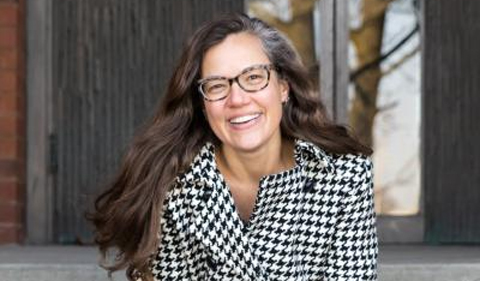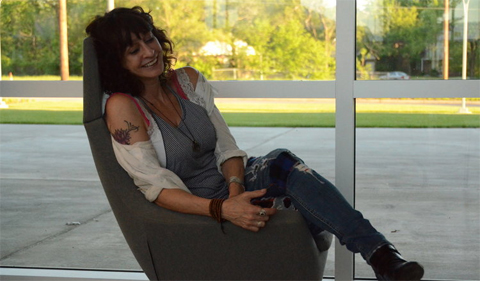The English Department presents visiting fiction writer Thisbe Nissen on Thursday, Feb. 21, at 730 p.m. in the Walter Hall Rotunda.
Madison Foltz‘s essay, “Crisis, Love, and Chaos in Thisbe Nissen’s Our Lady of the Prairie,” provides more information about Nissen’s work:
“So much of this life we spend holding ourselves together, when all we’re really looking for is someone who might undo us completely.” Phillippa Maakestad, the main character of Thisbe Nissen’s new novel Our Lady of the Prairie, finds just that in this widely praised story of metamorphosis, which is set against the backdrop of the contentious 2004 presidential election. Phillippa is a fifty-year-old theater professor in the greater midwest who has finally found some equilibrium in her life. She has a loving husband of twenty-five years and is preparing to marry off her mentally troubled daughter to a steadfast Amish man. However, Phillippa’s stability falls out from under her when she meets Lucius Bocelli, a debonair older history professor. Their ensuing affair upends Phillippa’s life, and Nissen writes the story with biting wit and sharp observation.
We’re happy to welcome Nissen to Ohio U for as residency this Feb 21st and 22nd (she will read from her work on the 21st, at 730, in Walter Hall Rotunda).
Nissen, associate professor of English at Western Michigan University, has authored two other novels—The Good People of New York and Osprey Island—and has had fiction published in The Iowa Review and the American Scholar among many others. Her nonfiction has appeared in publications such as Vogue, Glamour, and Preservation.
As exemplified in Our Lady of the Prairie, her third published novel, Nissen excels in exaggerating the normal friction among families and relationships in her writing. A longtime resident of the Midwest herself, Nissen skillfully illustrates the tight-knit toxicity of communities in our part of the U.S., and her characters have flaws which lead to dynamic, bombastic conflicts, which are often as comic as they are heartbreaking.
Phillippa, in the midst of catastrophe throughout the novel, perfectly captures the turbulence of her life and simultaneous state of contentment she finds in Lucius, when she thinks: “It’s an amazing thing watching two people discover that it’s to each other that their individual lives finally make sense.” Aside from her chaotic romantic life, Phillippa, a voluteenr for John Kerry’s losing campaign, is also troubled by the swirling political climate of the time and her hostile (and possibly Nazi-affiliated) mother-in-law, Bernadette. Adding to that, her daughter Ginny’s wedding is disrupted by a tornado before it even begins, a perfect metaphor for the raging storm that is Phillippa’s life as she is dragged along by the gusts of middle-age in middle America.
Our Lady of the Prairie is a novel of frustration and love, with a heavy dose of familial dysfunction. Phillippa is a woman teetering on the edge, a woman who cares for her family just as deeply as she feels vexed by them, and readers will share in her flashes of rage and denial, her glimmers of hopefulness. Driven by such a strong-minded protagonist, the novel delicately balances moments of turmoil with pangs of poignancy; and in the end, it reminds us that we are never truly done learning and growing up, regardless of age.




















Comments